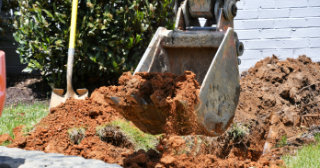If you own your home, it is likely you have an HO3 insurance (Homeowners 3), as this is the most common – and deservedly so – homeowner’s policy there is. You might wonder why HO3? What are HO1 and HO2? How many different types are there? How can you be sure the policy you have is the right policy if you don’t understand your other options?
Why HO3 is often the best option for homeowners

HO3 Insurance Policy
What are some of the specifics of an HO3 Insurance Policy?
An HO3 is also known as a Homeowners Special Form policy.
Advantages:
- It is so named because of the types of perils it protects the dwelling (Coverage A) against.
It protects your dwelling form all risks, except those specifically excluded, for the replacement cost of the dwelling for up to the limits of liability in the event of a covered loss. - An HO3 policy pays for damaged personal items (Coverage C) up to 50% of the coverage limits of Coverage A in the event of a covered loss.
- Additional living expenses under Coverage D is up to 30% of the of Coverage A.
Disadvantages
- Personal property is only covered if the loss is a result of the broad form named perils and is not all risk.
- Personal Property is only covered for its actual cash value.
Side note:
Endorsements can be added to this policy to change personal property to all risk at a minimal cost. Many Insurance carriers add this endorsement as a matter of course when quoting your homeowner’s policy.
Why HO3 is better than HO1 or HO2 (not recommended)
While there are other differences between the policies the main reason an HO3 policy is preferred and an HO1 and HO2 policy is not recommended comes down to what causes of loss, or perils, are included in the coverage.
An HO1 policy is a Homeowners Basic Form policy and only covers 12 perils
An HO2 policy, known as a Homeowners Broad Form policy, includes coverage for the 20 broad form perils.
This means that if you home is damaged by a peril outside of those included - your policy will not pay out, where as an HO3 policy includes all perils unless specifically excluded in the policy.
HO1
Advantages
- Pays for damaged personal items (Coverage C) up to 50% of the coverage limits from Coverage A in the event of a covered loss.
- Pays for the replacement cost of the dwelling for up to the limits of liability in the event of a covered loss.
Disadvantages
- Only protects the Dwelling (Coverage A) and personal property (Coverage C) from the Basic Form perils
- Personal Property is only covered for its actual cash value.
- Loss of Use Coverage D is an only 10% of Coverage A.
- Most Insurance companies do not offer this coverage because it is too striped down to be effective.
HO2
Advantages:
- Pays for damaged personal items (Coverage C) up to 50% of the coverage limits from Coverage A in the event of a covered loss.
- Pays for the replacement cost of the dwelling for up to the limits of liability in the event of a covered loss.
- Additional living expenses under coverage D is up to 30% of the of Coverage A
Disadvantages
- Only protect your Dwelling (Coverage A) and Personal Property (Coverage C) for the Broad Form Named Perils which can leave a significant gap in your dwelling coverage.
- Personal Property is only covered for its actual cash value.
Side Note
Many home insurance agents do not offer HO1 or HO2 policies as they do not provide sufficient coverage for something as important as your home. While you can still find these coverages, it is not recommended, and you may have to ask for them specifically.
How HO3 compares to HO5 insurance policies
If you don’t have an HO3 policy than you likely have an HO5 insurance policy - also known as a Homeowners Comprehensive Form policy. An HO5 insurance policy is very similar to an HO3 policy – the only difference is that personal property is protected against all -risk, except those specifically excluded and offers replacement cost value for your items. If you recall, HO3 policy limits personal property protection to the 20 broad form named perils and only pays the actual cash value of items. Because of this distinction, an HO5 policy is typically more expensive. To decide if this policy is right for you review the 20 broad form perils and talk to your insurance agent about risks you are concerned about depending on your location and lifestyle.
Advantages:
- Similarities to HO3:
- Includes Dwelling Coverage (Coverage A) against Special form, or all-risk perils – except of those specifically excluded.
- Pays for the replacement cost of the dwelling for up to the limits of liability in the event of a covered loss.
- Pays for damaged personal items (Coverage C) up to 50% of the coverage limits from Coverage A in the event of a covered loss.
- Additional living expenses under coverage D is up to 30% of the of Coverage A
- HO5 policies cover personal property against special form perils.
- Includes Dwelling Coverage (Coverage A) against Special form, or all-risk perils – except of those specifically excluded.
- Personal Property is covered for its Replacement Cost
Disadvantages:
- HO5 insurance policies tend to be more expensive than an HO3 insurance policy. Depending on where your home is located and the value of your personal property the cost difference of upgrading your personal property coverage may be worth it. If you own a lot of valuable items increasing your coverage is not a bad idea.
Side Note:
HO5 insurance policies are not available in all locations. Luckily, if you live in an area where you cannot get an HO5 policy you can usually opt to include additional coverages in your HO3 policy.
What happened to HO4?
We’ve talked about HO1, HO2, HO3 and HO5 – you might be wondering why we skipped HO4. This is simply because HO4 is a renter’s policy. An HO4 policy protects personal property against the 20 broad form named perils, but does not have any coverage for the dwelling or other structures. These would be the responsibility of the landlord to insure.
Includes:
- Personal Property (Coverage C) - covers personal property losses up to the Actual Cash Value up to the limits of liability.
- Loss of use (Coverage D) up to 30% of Coverage C.
- Personal Liability (Coverage E)
- Medical Payments (Coverage D)
Are there other types of home insurance policies?
There are 3 more types of HO insurance – an HO6, an HO7 and an HO8 policy.
HO6
AN HO6 policy is a Condominium Owner’s Form policy – meaning it is intended to be used by the owner of the unit, not the Condo Owner’s Association that owns the condo complex (exterior structure and common areas).
Includes:
- Dwelling (Coverage A) to protect the interior of the condo for replacement cost up to the limits of liability. This typically includes interior walls, ceilings, floors, and other structures individually owned by the condo unit owner.
- Other Structures (Coverage B) – Optional – In the rare case that the condominium unit owner is responsible for outbuildings, coverage B can be included in this policy. However, these building are more typically the responsibility of the Condominiums Owner’s association.
- Personal Property (Coverage C) - covers personal property losses up to the Actual Cash Value up to the limits of liability.
- Loss of use (Coverage D) up to 30% of Coverage C.
- Personal Liability (Coverage E)
- Medical Payments (Coverage D)
- Dwelling and Personal Property are both covered against the Broad Form Named Perils. However, for an additional premium the Dwelling Coverage can be upgraded to provide coverage against Special Form (All-Risk) Perils.
HO7
An HO7 policy is for mobile homes. If you would like information on insuring your mobile home, we recommend you visit Foremost Insurance.
HO8
An HO8 is a modified form policy. This type of policy is extremely rare as it does not have any significant advantages over the other HO policies. These are only a few cases in which this policy would be issued, and very few insurance companies offer it.
Disadvantages:
- Only protects the Dwelling (Coverage A) and personal property (Coverage C) from the Basic Form perils
- Pays for the Actual Cash Value of the dwelling for up to the limits of liability in the event of a covered loss.
- Personal Property is only covered for its actual cash value.
- Loss of Use Coverage D is an only 10% of Coverage A.
- Most Insurance companies do not offer this coverage because it is too striped down to be effective.
While this article aims to explain the various types of default HO policies, it is important to note that different insurance carriers may have slight variations on these policies, and many offer endorsements that can be used to modify the coverage. For example, you can add an endorsement to an HO3 insurance policy that upgrades your personal property coverage from Actual Cash Value to Replacement Cost. Generally, these endorsements are inexpensive, and may be included automatically in your quote.
Furthermore, many of these policies can be modified to exclude Coverage B, C and D to suit your unique needs. For example, if you rent the home to someone else you would not want Personal Property (Coverage C) included in your policy since you have no personal property on the premises.


